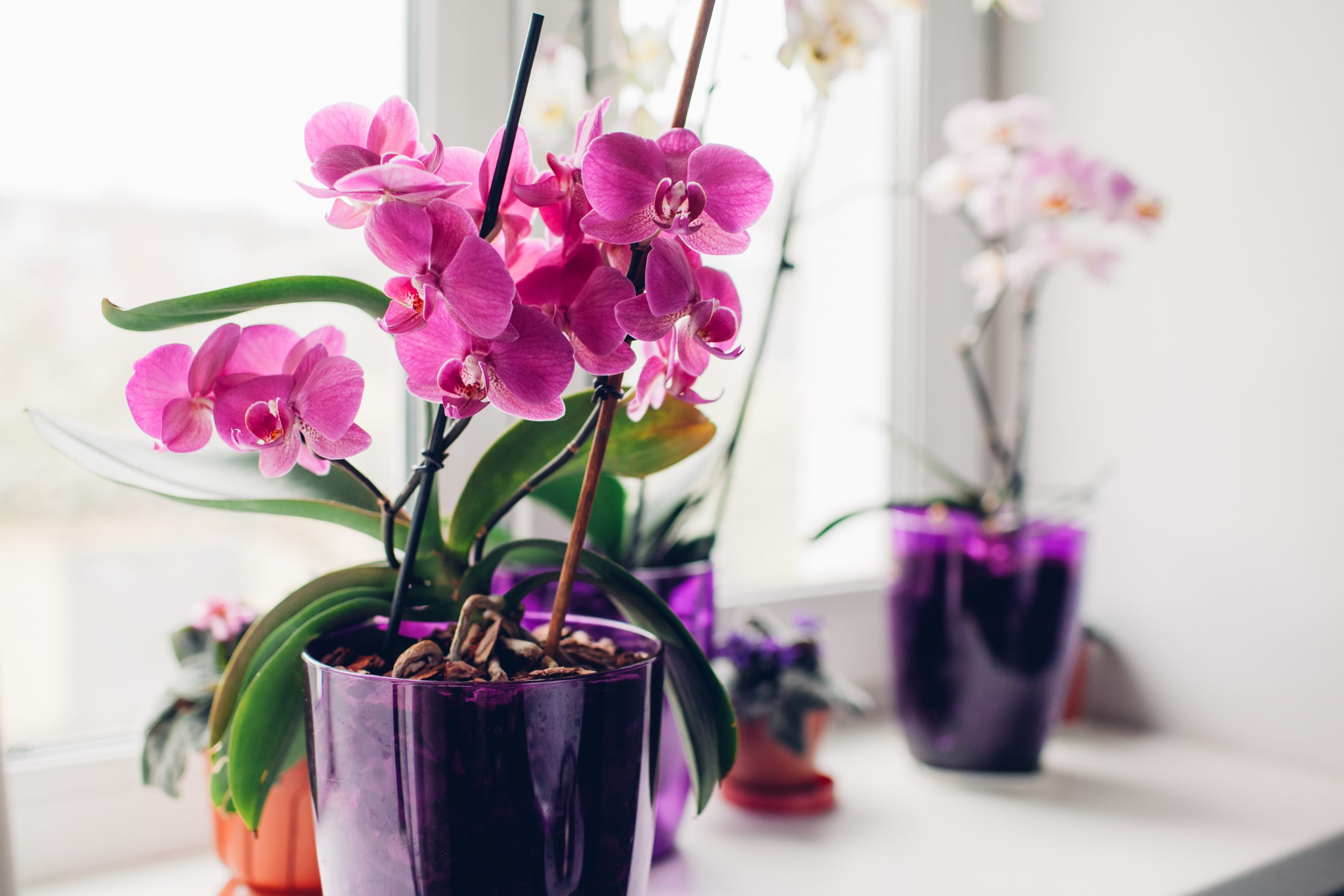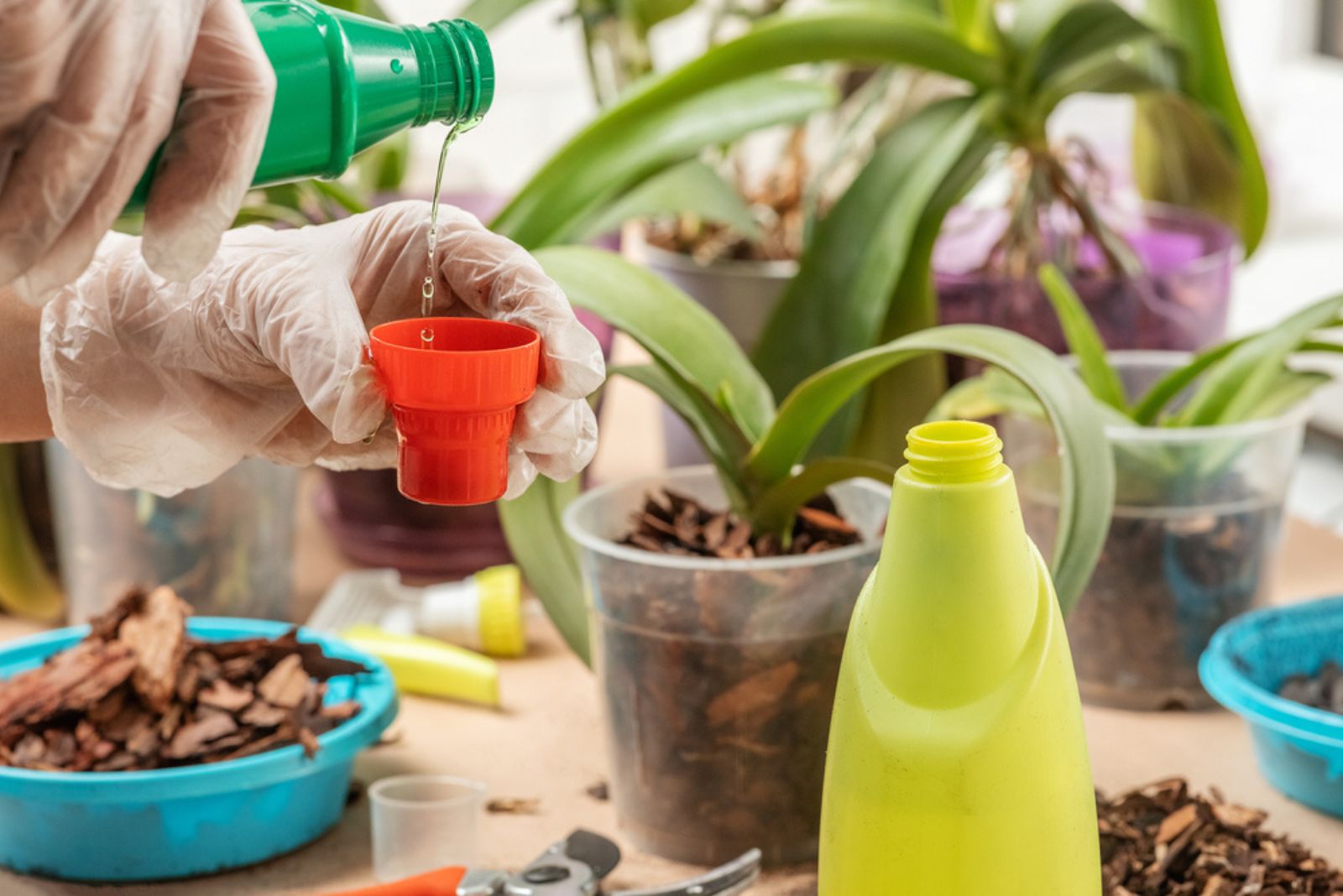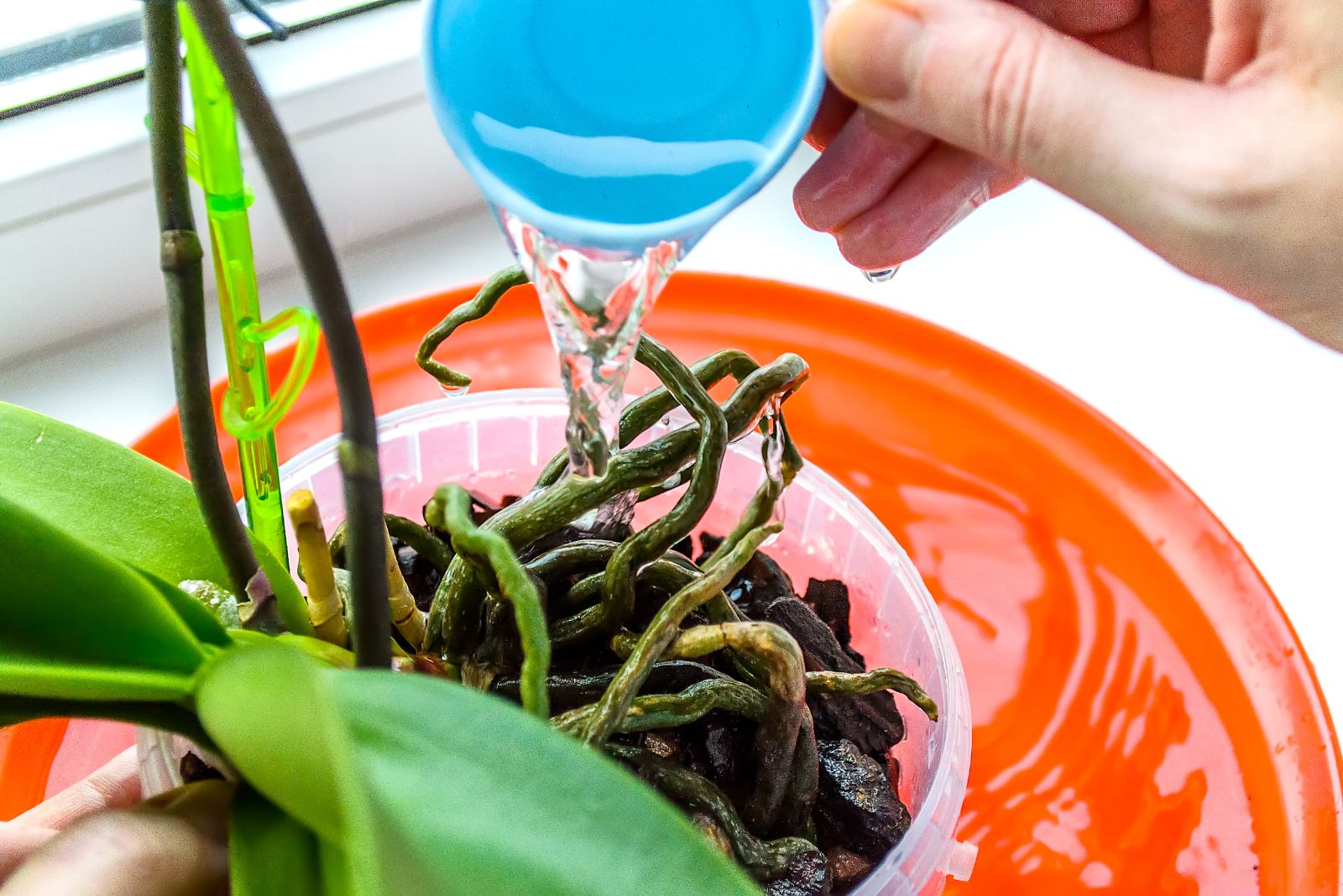Everyone likes orchids! Their delicate petals can’t go unnoticed and your home looks absolutely fantastic when these plants are in full bloom.
But beauty comes with a price. You may already know that you need to put an effort into meeting the requirements of these drama queens. Orchids are indeed one of the hardest plants to maintain indoors.
Well, nothing is impossible, and once you get the gist, you can have thriving and healthy orchids. One of the most important parts of orchid care is fertilization.
They need food to grow healthily but if you use it too much or too often, it can have adverse effects.
In this article, you’ll find out when and how to fertilize orchids and the best type of food to use for an abundance of splendid blossoms year after year.
Let’s get started!
When To Fertilize
If you decide on growing orchids, you should put feeding on the to-do list. However, you should be careful not to overfertilize these plants because it can lead to the roots burning.
The first thing you should know is that you should feed your orchids only during the growing season, which is in spring and summer. These plants will enter dormancy when fall arrives so you should reduce or stop feeding by then.
During active growth, roots and leaves develop further and need a lot of energy and nutrients. So, feed these plants approximately once or twice a month during the spring and summer.
Some growers employ a technique known as weekly, weakly, which involves applying fertilizer each week but you apply less than you would if you fertilized every 2 or 4 weeks (half to quarter-strength).
I highly recommend flushing your orchid approximately every month. Salt may accumulate in the soil and cause yellowing in orchid stems and other issues. Use clean room temperature water when flushing your plants.
The Best Fertilizer For Orchids
Now that you know the frequency of feeding these captivating plants, it’s time to learn the best type of food.
You can find fertilizers specifically designed for orchids in garden centers. Some are water-soluble and some come in sprays.
However, the type of soil your orchids grow in may help you determine which fertilizer to use. For instance, if you grow these plants in bark, you should opt for a fertilizer with a higher concentration of nitrogen. 30-10-10 or 15-5-5 are some examples.
Orchids grown in different media and mounted orchids will benefit more from well-balanced fertilizers, such as triple 20.
If you want to encourage blossoming in your orchids, you can apply fertilizers rich in phosphorus. An example of the ideal NPK ratio of such a fertilizer is 10-30-20.
Always pay attention to the dosage when feeding your orchids because too much fertilizer can cause various problems, such as drooping in orchid leaves.
Many fellow growers have asked me if they could use standard houseplant fertilizers on their orchids. It’s always better to use ones designed for these plants.
However, if you decide on using all-purpose fertilizers, go with liquid and balanced types such as 10-10-10 or 20-20-20. Dilute it to a quarter strength and apply it every second watering.
When Not To Fertilize Your Orchids
It’s important to know that these plants should never be fertilized when their soil is dry. This can burn the roots of your orchid and cause them severe stress.
When planning and determining your watering schedule, include feeding. First, water your orchid and then apply fertilizer.
Another thing to pay attention to is orchid dormancy. Remember that just like many other common houseplants, orchids are dormant during the winter months.
This means that they don’t display new growth during this period and don’t need many nutrients and energy.
You can easily overfeed your orchids so you should either reduce the frequency or stop fertilizing altogether.
Orchids are amazing plants and their beauty is indeed incomparable. They do need more pampering than most but once you meet their requirements, they’ll most certainly reward you with an abundance of captivating blooms. Feed them according to our instructions and enjoy the view!



